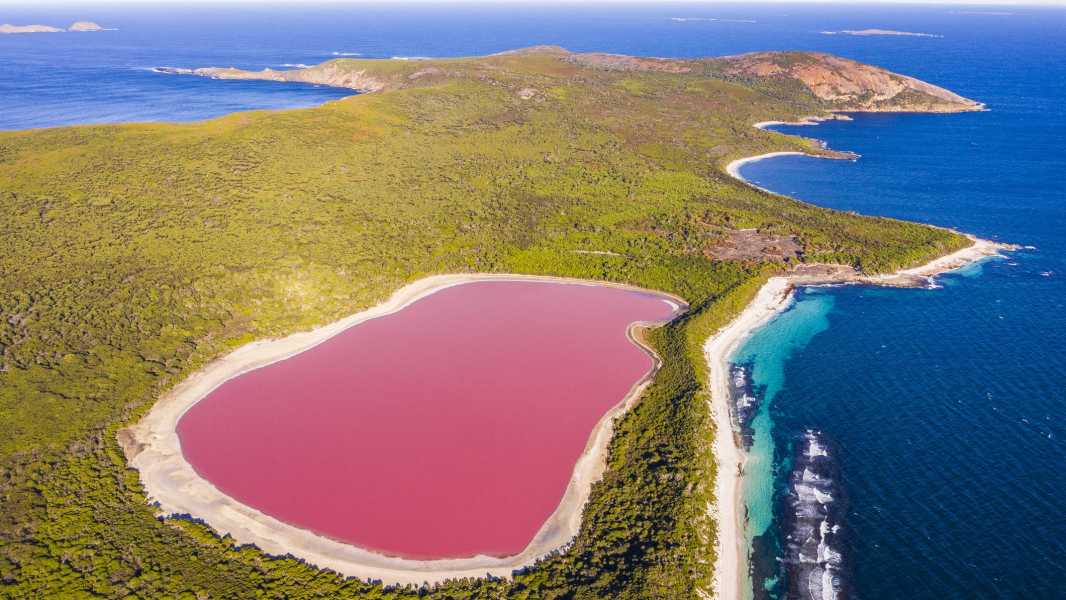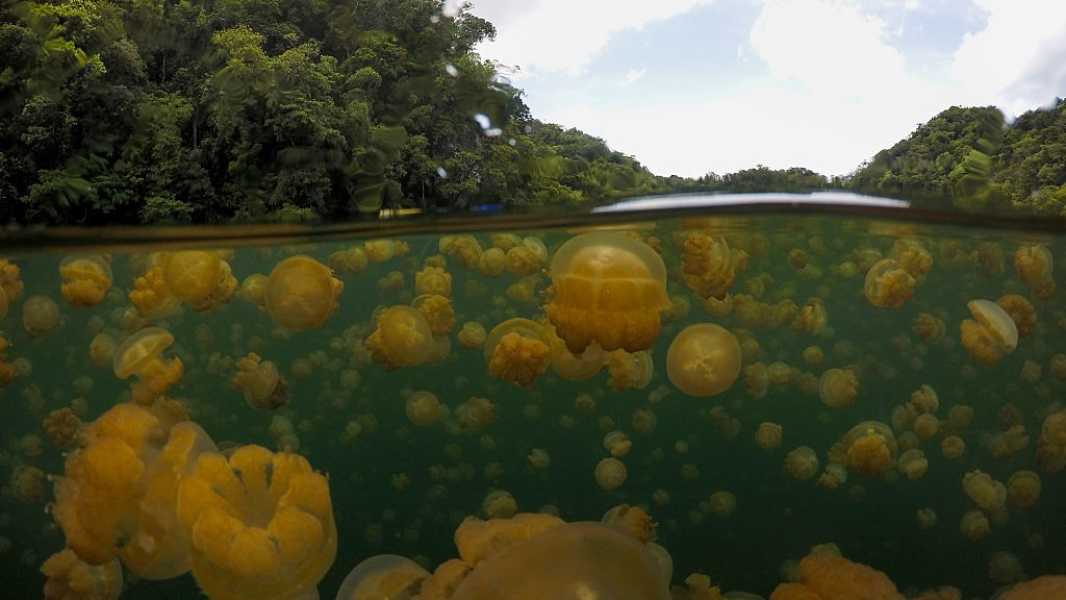
Lake Hillier is one of Australia's most famous pink lakes. (Photo: Philip Thurston/Getty Images)
Australia's pink lakes are bodies of water that are home to rare pigment-producing microbes. The lakes are on average 10 times saltier than the ocean, attracting algae and bacteria that produce beta-carotene, the red-orange pigment that also gives carrots, crayfish and flamingos their distinctive color.
Most of the country's pink lakes are in Western Australia, where there are about a dozen. According to National Geographic, these lakes are the remains of rivers that flowed through these areas more than 15 million years ago, indicating that they are thousands of years old.
As the ancient rivers dried up, small pools formed that eventually evaporated, concentrating the salt and attracting salt-loving microorganisms such as Dunaliella salina and Salinibacter ruber, single-celled algae and red bacteria, respectively. D. salina and S. ruber produce beta-carotene when exposed to sunlight, turning the lakes various shades of pink depending on the salt levels. According to National Geographic, beta-carotene protects these microorganisms from ultraviolet radiation and absorbs light energy, allowing them to thrive and reproduce.
You may like
-

Jellyfish Lake: A saltwater body of water in Palau with a toxic bottom and surface waters teeming with millions of jellyfish.
-

A perfect trio of prehistoric atolls sparkle like tropical jewels off the coast of Australia.
Sourse: www.livescience.com





